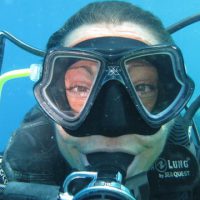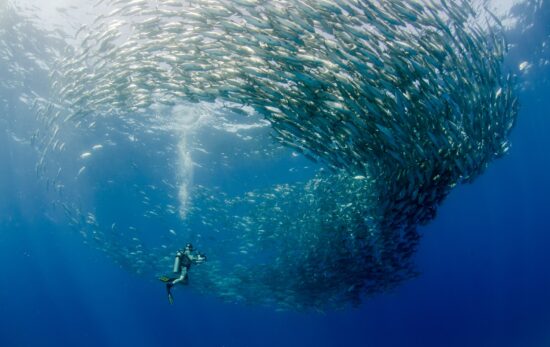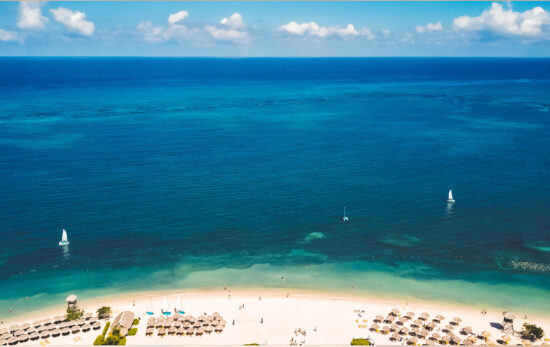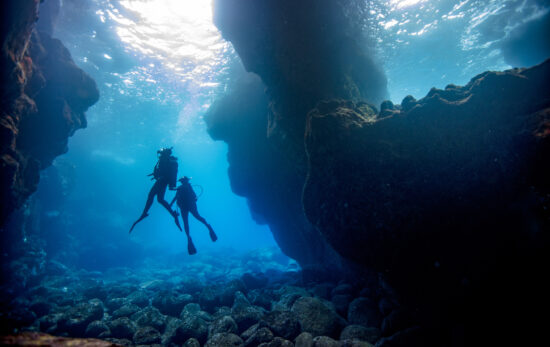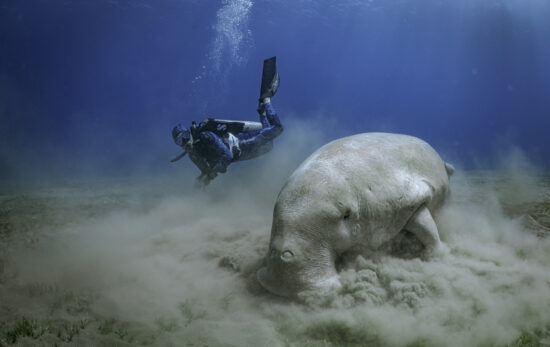Unsurprisingly, the question, ‘How do you breathe while scuba diving?’ is not uncommon. After all, humans are not designed to breathe underwater. There are some myths and misconceptions about breathing from scuba diving equipment underwater, and lots of people out there wonder what is scuba diving like. So, in this blog, we will separate fact from fiction and clear up any grey areas for future scuba divers or those curious about learning how to scuba dive.
The Number 1 Rule in Scuba Diving
The number one rule in scuba diving is that you always breathe while scuba diving! You should never ever hold your breath. You should constantly be breathing: inhale, exhale, inhale, exhale. Why? This is because as you change depths, pressure decreases and increases accordingly, and if you are holding your breath, the air inside your lungs will either expand or contract, causing your lungs to potentially over-expand or contract. Provided you are always breathing, you keep your lungs open and functioning normally.
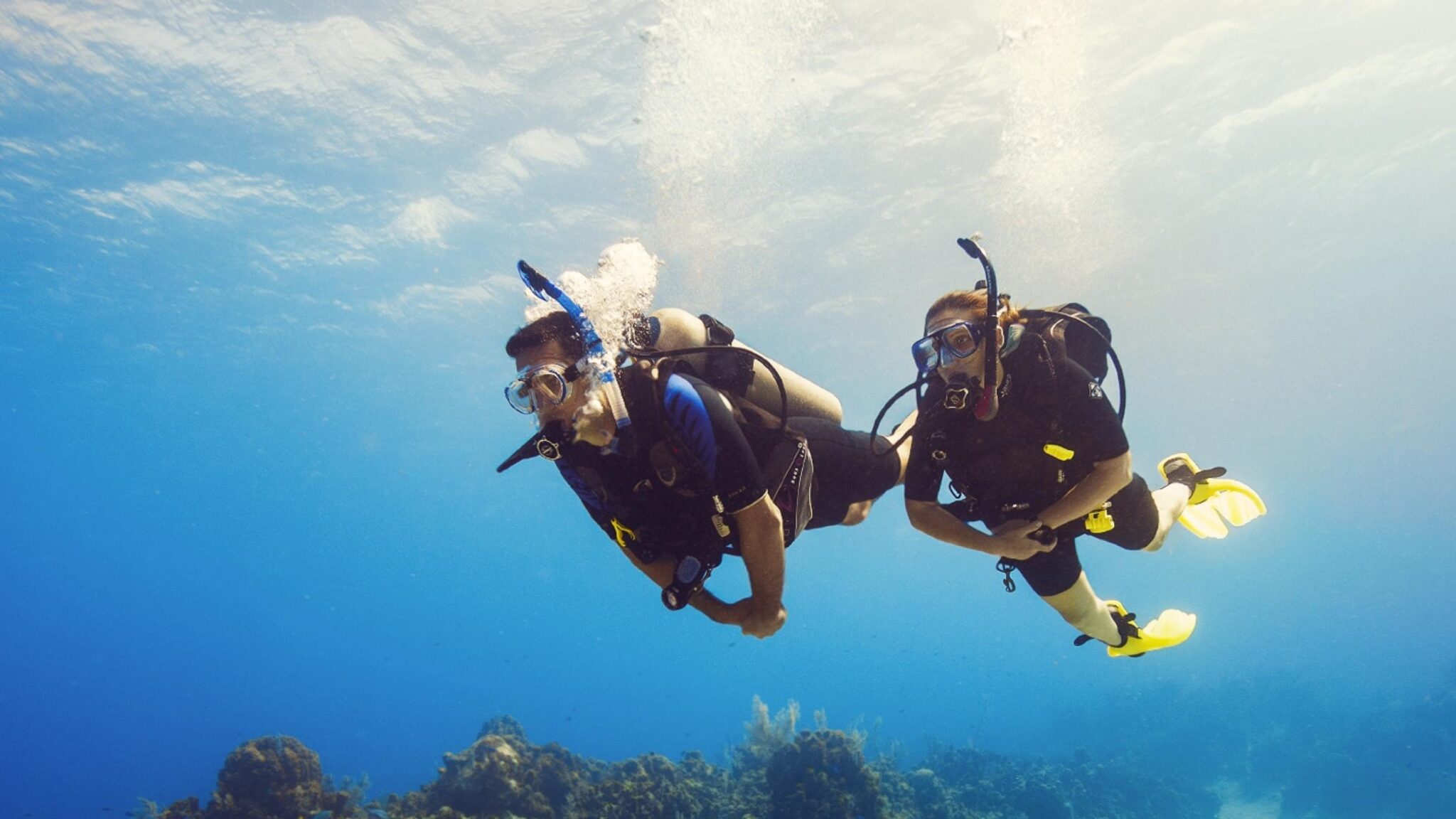
What Do You Breathe While Scuba Diving?
Another common misconception is what divers actually breathe while scuba diving. It’s not oxygen! The gas in scuba diving tanks is not pure oxygen because it would become toxic under pressure. The gas in scuba divers’ tanks is ‘air.’ That’s right, good old regular air, exactly the same as what you are breathing now. Air is made up of 21% oxygen and 79% nitrogen.
Do you use Your Nose or Mouth to Breathe while Scuba Diving?
Good question but bad news for those who have trained themselves to inhale through their nose. Because scuba diving masks encase a diver’s eyes and nose, it’s simply not possible to inhale through your nose while scuba diving. The appropriate way is to inhale and exhale through your mouth, even though you could technically inhale through your mouth and exhale through your nose. This is not recommended as exhaling through your nose may result in mask leaks.
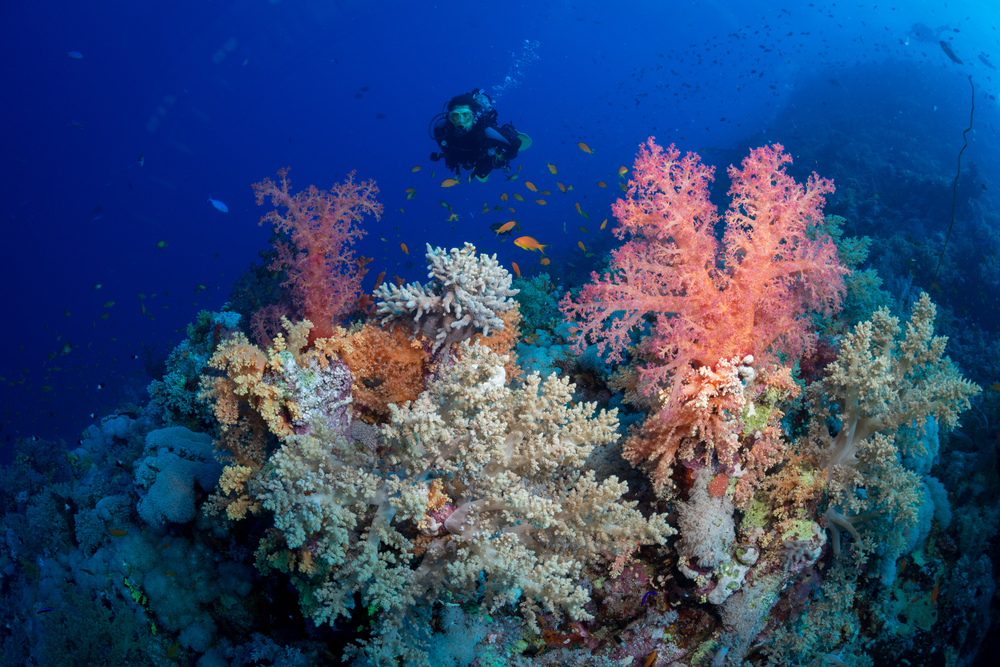
What is the Best Breathing Pattern while Scuba Diving?
It’s important to maintain a slow and rhythmic breathing pattern while diving. Breathe fully (deeply) but keep it easy and relaxed. It shouldn’t feel as though you are ‘sucking’ the air out of the tank or forcing it out through your mouth. When you get into a rhythm, it starts to feel easy, and the sound of inhaling and exhaling bubbles has a comforting effect (see more below).
The Mental Power of Breathwork
Awareness of your breathing is recognized as having positive effects on good mental health and wellness. There are multiple online videos of breathwork exercises that combine breathwork with yoga and meditation. The fact is that whether we are underwater or on the surface, breathing is core to our well-being. Not just for our immediate survival but for our physical and emotional health. When you are scuba diving, you are even more aware of your breathing; for many divers, it’s a form of meditation!
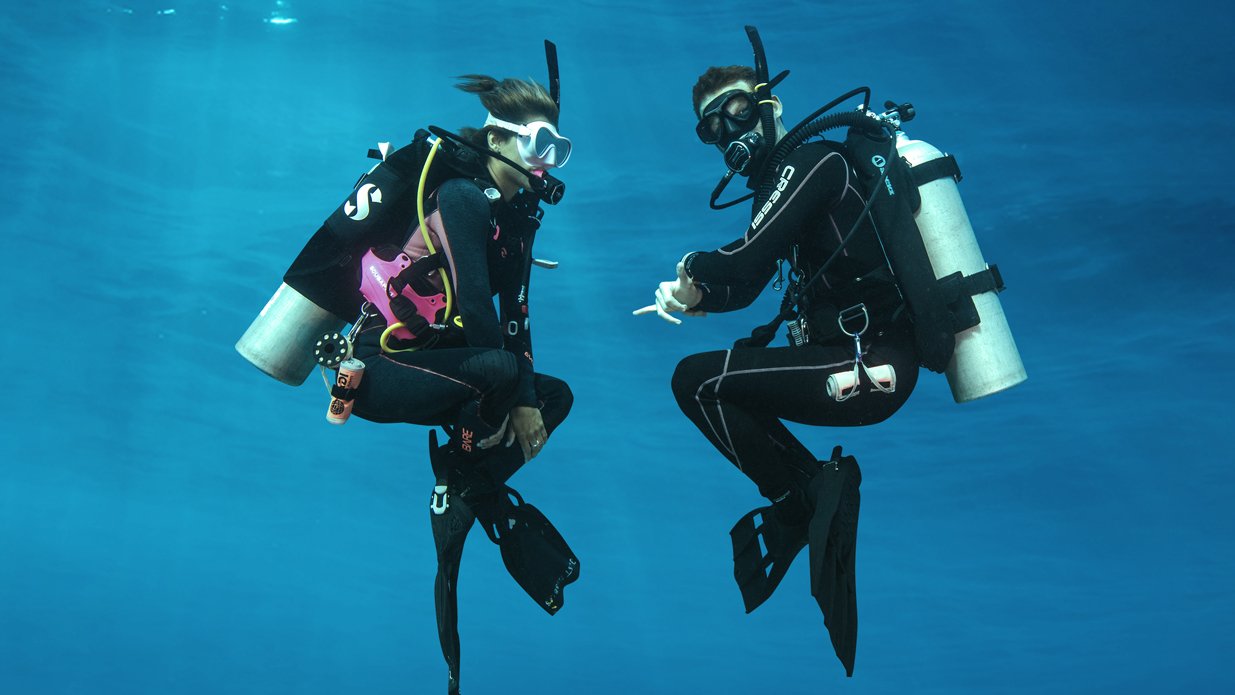
What is the Diving Benefits of a Good Breathing Pattern?
There are many! Your breathing affects both your diving position and comfort in the water, as well as the time you can spend underwater. These two factors are also inextricably linked:
Buoyancy and Breathing
If you think of your lungs as a balloon, when you breathe in, a balloon fills with air and therefore starts to float up toward the surface. When you breathe out, it would be the same as the balloon deflating, and it would start to sink back down. This is exactly what happens with your body. When you inhale, you will slowly start to rise up, and as you exhale, you will start to sink back down. By being aware of this and by maintaining a proper breathing pattern, divers can utilize this to achieve neutral buoyancy. Being neutrally buoyant allows a diver to move more effortlessly (without exertion) through the water. When a diver is relaxed and moving with ease, they are consuming less air than a diver who is exerting themselves. More on this below…
Air Consumption and Breathing
Maintaining a slow yet deep breathing pattern results in lower air consumption which means more time underwater! By breathing deeply and drawing air down into your lungs before slowly releasing it, you are giving your body the best delivery of the oxygen it needs to function.
Divers with poor buoyancy control will usually kick more than they need to and exert themselves. Just as when we exert ourselves during exercise at the gym, a diver with poor buoyancy will be getting a workout – which means breathing more heavily to supply the additional oxygen that the muscles need. Yes, you guessed it, this diver’s tank of air will not last as long as a diver with neutral buoyancy who’s taking it easy!
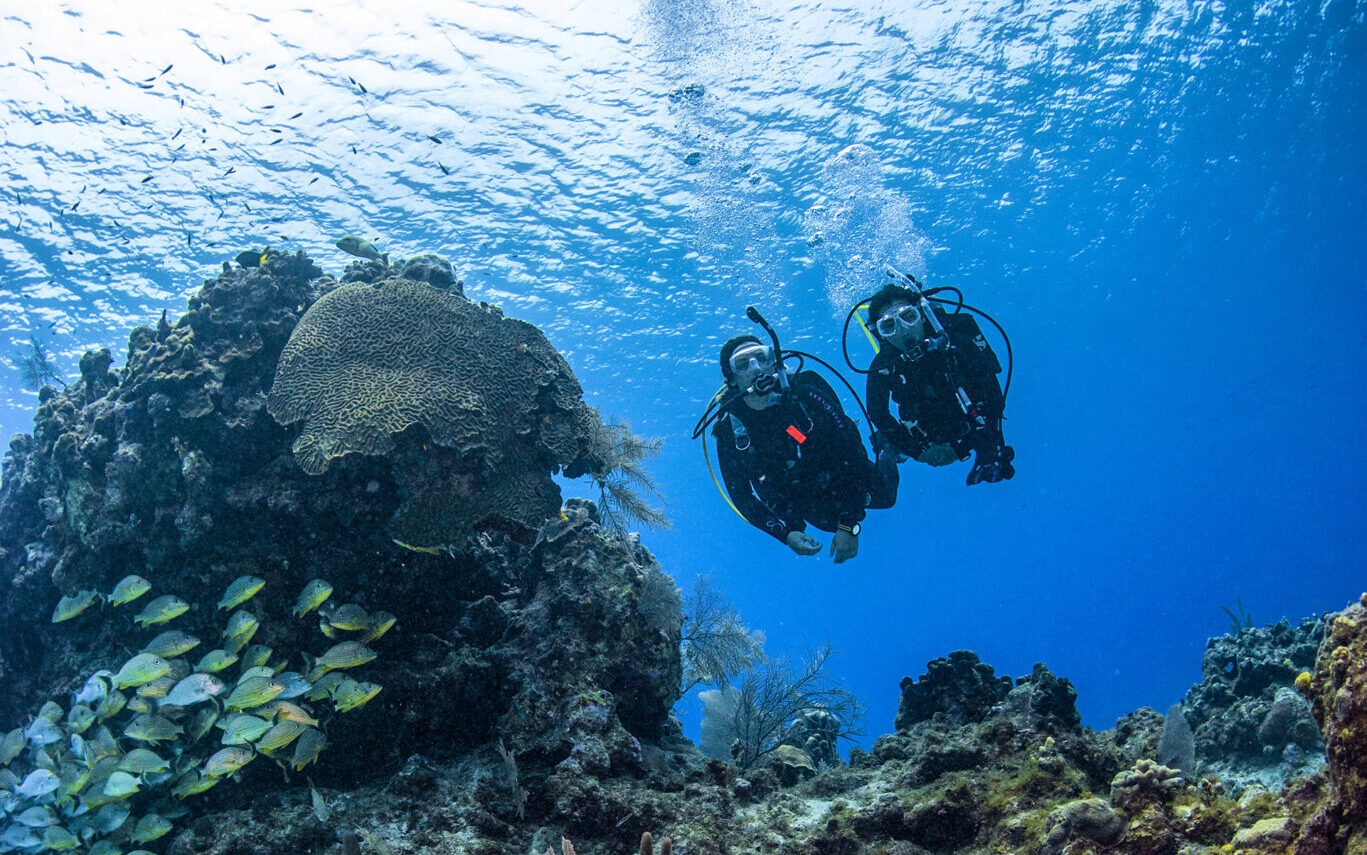
How Do I Control my Breath while Scuba Diving?
If you are new to diving, you will cover the basics of good breathing techniques for scuba diving during your PADI Open Water Course – you can even start studying online immediately with PADI eLearning.
If you are already a certified diver and want to improve your breathing technique, the PADI Peak Performance Buoyancy Specialty course teaches you how to utilize your breathing for better buoyancy and air consumption.
Ready for your next trip?
Are you ready to plan your next scuba diving adventure? Check out incredible scuba diving destinations around the world with PADI Travel.
